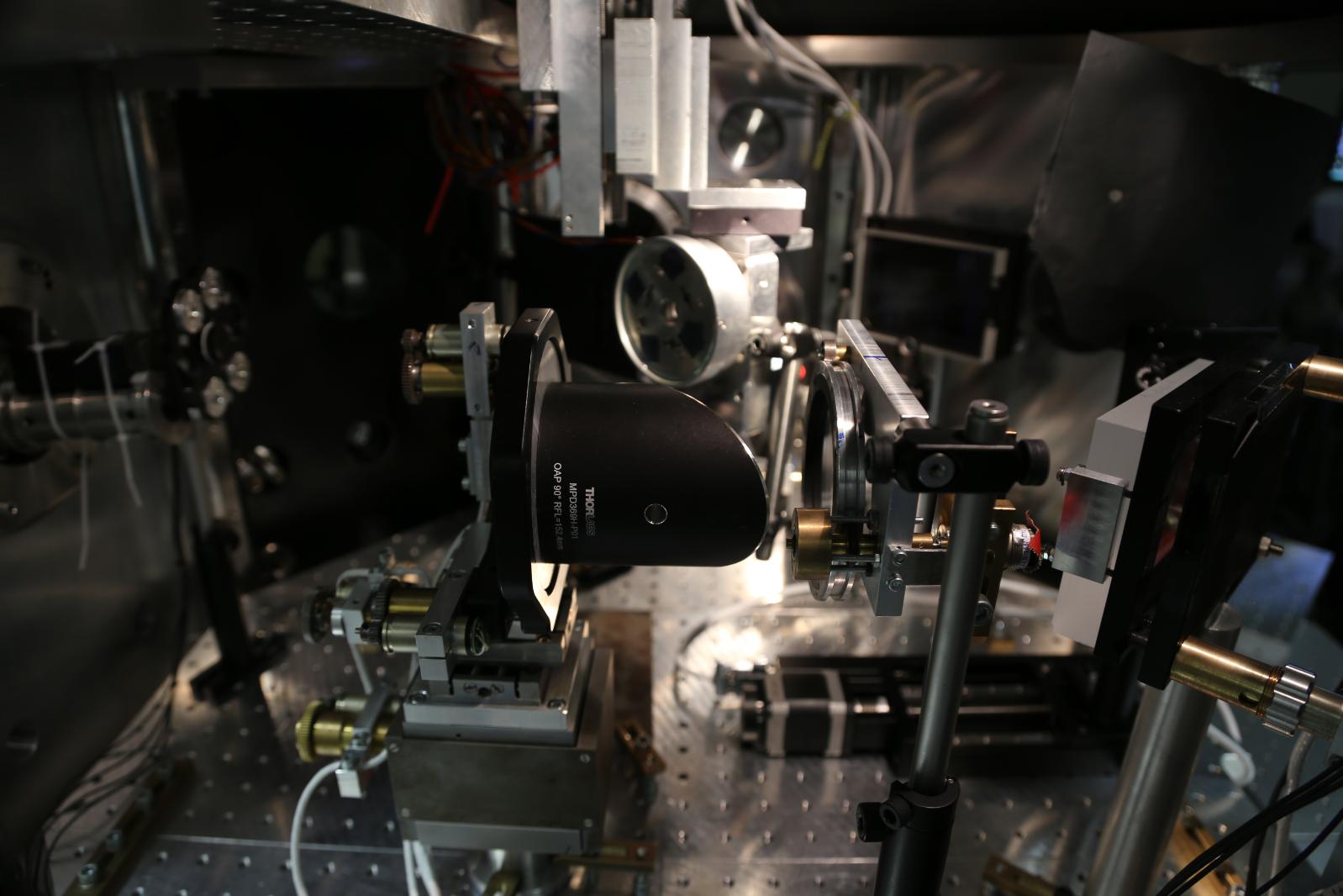X-ray and attosecond sources
During the interaction of an ultra-intense laser pulse (>1018Wcm-2) with a solid surface, electrons in the target material’s atoms are ripped away, resulting in an ionised plasma. The incident laser is able to apply extreme forces on this newly formed flat plasma surface, accelerating electrons in it to velocities approaching the speed of light. In a remarkable demonstration of the Doppler effect – the shift in frequency of radiation due to the motion of its source – the laser light reflected back from this surface is heavily upshifted to the extreme ultraviolet (XUV) (wavelengths of »10nm to 100nm) or even X-ray (<10nm) regions of the electromagnetic spectrum. In our everyday experience we are familiar with this effect when hearing the change in pitch of a siren from a passing vehicle but the equivalent effect for light waves is properly described by application of Einstein’s Special Relativity. The regular observations of this upshifted light in laboratory experiments serves as an important consequence of this important theory.
The resulting radiation has potential applications as a small-scale laser-based source of coherent ultra-bright XUV pulsed when compared to alternative accelerator sources such as synchrotrons or free electron lasers which require massive infrastructure. A unique aspect of this radiation is, however, that it contains a sequence of very short, attosecond (10-18s) scale pulses which is the temporal scale of electron orbits in atoms and molecules. With access to light pulses of this duration, we effectively have an ultrashort flash that can be used to take snapshots of the dynamics of such systems providing a unique window into ultrafast atomic and molecular processes.
Here at the Centre for Plasma Physics, in collaboration with groups worldwide, researchers are engaged at the forefront of research into this source. Our work takes places at several different internationally recognised laser facilities including the twin laser beams of the Astra Gemini facility based at the Central Laser Facility in the UK and the JETI40 and JETI200 lasers based at the Helmholtz Institute Jena in Germany. We employ both experimental and simulation methods to address key research challenges in this area including isolation of individual attosecond pulses, developing characterisation techniques suitable for these timescales and optimisation of brightness of the XUV pulses which is important for pump-probe studies.

KEY RECENT PUBLICATIONS
J.P. Kennedy, B. Dromey, M. Yeung, Isolated ultra-bright attosecond pulses via non-collinear gating, New J. Phys., 24, 113004 (2022)
C. Wu, L. Lu, M. Yeung, S. Wu, S. Cousens, S. Tietze, B. Dromey, C. Zhou, S. Ruan, M. Zepf, Proposal for complete characterization of attosecond pulses from relativistic plasmas, Opt. Expr., 30, 389 (2022)
R.E. Smith, E. White, P.M. Gilmore, B. Dromey, M. Yeung, Double optical gating of high order harmonics from plasma surfaces, New J. Phys., 23, 093010 (2021)
S. Tietze, M. Zepf, S.G. Rykovanov, M. Yeung, Propagation effects in multipass high harmonic generation from plasma surfaces, New J. Phys, 22, 093048 (2020)
CURRENT FUNDING:
Ultrabright Sources of Attosecond Pulses, EPSRC (2020-24)
Ultrafast radiation sources and their applications, EPSRC (2020-24)
